Struggling with tight, sore muscles and looking for real relief? You’re in the right place. This ultimate guide will walk you through simple, effective techniques to massage tight muscles at home—no fancy equipment or professional training needed. You’ll learn how to target key tension areas, apply the right pressure, and enhance your massage with oils that soothe and relax. Whether you’re dealing with post-workout stiffness or everyday stress, these tips will help you feel better, move easier, and unwind naturally. Let’s get started!
Table of Contents
Types of Massage

Swedish Massage
Swedish massage is a light to medium pressure massage that uses long strokes, kneading, and percussion-like tapping to relax muscles and increase circulation. This type of massage helps to reduce tension and can be beneficial for those with tight muscles.
Deep Tissue Massage
Deep tissue massage is a type of massage therapy that focuses on realigning deeper layers of muscles and connective tissue. It is especially helpful for chronically tense and contracted areas such as stiff necks, low back tightness, and sore shoulders. This type of massage is used to break up scar tissue, decrease muscle tension, and helps to increase flexibility and range of motion. It can also be effective in relieving chronic pain and reducing inflammation caused by tight muscles.
Both Swedish and deep tissue massage can be used to help loosen tight muscles. By applying pressure and/or manipulating the muscle fibers, massage can help to increase blood circulation and reduce pain and tension. This can help to improve range of motion and relaxation of the affected muscles.
Benefits of Massage
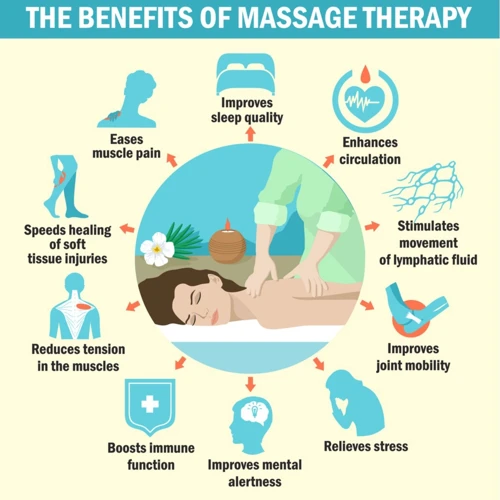
- Stimulates the lymphatic system, improving the body’s ability to remove waste, toxins and other debris.
- Increases the circulation of blood and lymph, reducing the time needed for injury healing and helping to reduce swelling.
- Improves posture and helps to reduce pain and tension in the muscles.
- Helps to break down adhesions in the muscles, allowing them to relax more quickly.
- Reduces stress and anxiety, and can help to improve sleep.
- Increases the production of endorphins, which helps to reduce pain and enhance relaxation.
- Improves flexibility and range of motion.
- Helps to reduce headaches and can improve the performance of athletes.
How Does Massage Loosen Tight Muscles?

Massage can help to loosen tight muscles by increasing blood flow to the area, which helps to bring oxygen and nutrients to the muscle tissue. The massage therapist’s hands can create pressure points that stretch and relax the muscle, allowing it to become more flexible and less tight. Massage also increases the production of endorphins, which can help to reduce pain and stress. Massage can also help to improve posture by lengthening and lengthening the tight muscles. Here are some of the ways massage can help loosen tight muscles:
- Stretching: Massage therapists use special techniques to stretch the muscles, which helps to loosen them and improve range of motion.
- Manual Release: Massage therapists use their hands to apply pressure to specific points in the muscle, which helps to release the tension.
- Trigger Point Therapy: This technique helps to release tight muscles by applying pressure to specific points in the muscle.
- Deep Tissue Massage: This type of massage applies deep pressure to the muscle tissue, which helps to release tension and reduce pain.
By loosening tight muscles with massage, you can improve your range of motion, reduce pain, and improve posture. Massage can also help to reduce stress and improve overall wellbeing. If you are experiencing tight muscles, massage can be an effective way to relax and loosen them.
Preparation for Massage
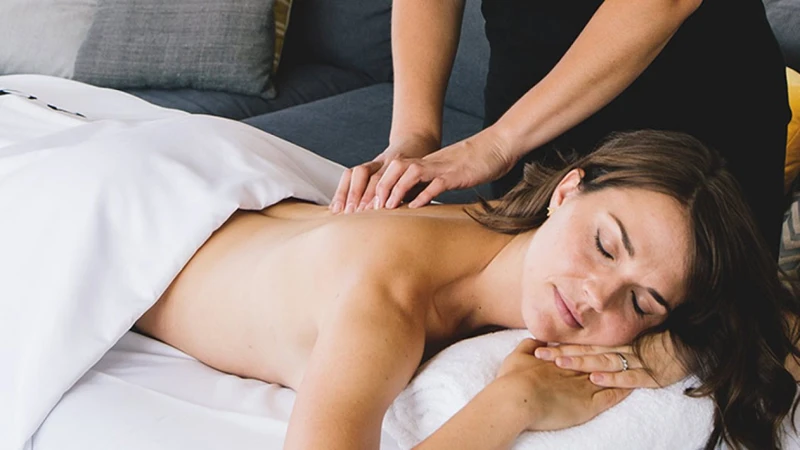
- Create a Relaxing Environment: Find a quiet and comfortable space to massage your partner. Dim the lights, light a candle and play calming music, or use an aromatherapy diffuser with calming essential oils.
- Gather Supplies: Get a massage table or a comfortable, flat surface to perform the massage. You can also use towels, blankets, and pillows for extra comfort and positioning. Make sure you have a massage oil or lotion.
- Set the Mood: Before the massage, talk to your partner and establish boundaries. Ask them about their current health and any areas that may cause discomfort. This will help set the mood and create a relaxing atmosphere.
- Temperature: Make sure the room is warm enough for the massage. If the room is too cold, your partner may feel uncomfortable and tense, which can make it difficult to relax.
- Undress: Ask your partner to undress to their comfort level. If they are uncomfortable, you can use a towel to cover them. Make sure to only uncover the area that you are massaging.
Step-by-Step Guide to Relieve Tight Muscles
1. Warm the Tissue Properly
Before massaging tight muscles, take 3–5 minutes to gently warm the tissue. Light movement such as mobility drills, dynamic stretching, or heat therapy increases blood flow and softens the fascia. This makes the muscles more responsive to pressure and reduces the chance of discomfort during deeper work.
2. Begin With Broad, Gentle Pressure
Start by placing your hands on the area and applying slow, gliding pressure. This helps calm the nervous system and allows the muscle to relax before working more deeply. Use the heel of your palm or your forearm for larger areas like the thighs, back, or shoulders. 😌
3. Use Friction to Loosen Surface-Level Tension
Friction works well for tight bands of muscle. Apply moderate pressure with your fingertips or thumb and make small circular or cross-fiber movements. This helps break up superficial adhesions, warms the tissue further, and prepares deeper layers for focused work.
4. Apply Petrissage to Lift and Soften Tight Muscles
Petrissage (kneading) is one of the most effective methods for relieving muscle tightness. Gently lift, squeeze, and roll the muscle between your hands. This improves circulation, softens dense tissue, and helps release chronic tightness caused by posture, stress, or overuse. 💆♂️

5. Release Trigger Points With Sustained Pressure
Trigger points feel like small, firm knots within the muscle. Using your thumb, fingers, or a massage tool, apply steady pressure for 10–20 seconds until the knot softens or discomfort decreases. You may feel referred sensations in nearby areas, which is normal. Slow breathing helps the tissue release more easily.
6. Stretch the Muscle While It’s Warm
Once tension begins to release, follow with slow, controlled stretching. This reinforces the new range of motion, reduces the likelihood of the muscle tightening again, and helps the fascia reorganize more smoothly. 🧘♂️
7. Cool Down to Prevent Soreness
After massage and stretching, help the tissue settle with a gentle cool-down such as light movement or relaxed stretching. This encourages healthy blood flow, reduces post-massage soreness, and helps the muscle maintain its improved mobility. 🌿
If you’d like to understand more about why muscles feel so much relief after massage, explore:
👉 Why Neck Massage Feels Good
Common Mistakes to Avoid

Applying Too Much Pressure: It can be tempting to press too hard into the muscle if it feels like the massage is not doing anything. However, over-pressuring can cause pain and further tense the muscle.
Failing to Use Oils: When massaging any area of the body, it is important to use lubricants such as oils, lotions, or gels to reduce friction and make the massage more pleasant.
Focusing on One Area Too Long: It is important to move around the body and focus on different areas. Massaging one area for too long can cause pain and discomfort.
Ignoring the Person’s Comfort Level: Everyone’s body is different and responds differently to massage. It is important to check in with the person receiving the massage to ensure they are comfortable with the pressure and the length of the massage.
Safety Considerations
Before massaging tight muscles, it is important to keep safety in mind. Make sure to massage only the areas that have been approved by your healthcare provider. Additionally, do not massage any areas that are injured, bruised, or inflamed. To avoid any further discomfort, start off gently and gradually increase pressure and intensity as needed. Before applying pressure, make sure the recipient is comfortable and relaxed. Stop immediately if the recipient experiences any pain or discomfort. If the recipient becomes faint or nauseous, stop the massage and seek medical help.
Frequently Asked Questions
What type of massage is best for tight muscles?
The best massage for tight muscles depends on the source of the tension. Trigger point massage is ideal for stubborn knots that refer pain. Deep tissue massage targets deeper layers of fascia and is helpful for chronic tightness or athletic strain. Myofascial release gently loosens connective tissue to improve mobility. For overall relaxation, Swedish massage increases circulation and reduces general stiffness. Many people benefit from a combination of techniques over time.
How often should I massage my tight muscles?
Most people find relief by massaging tight muscles 1–2 times per week, especially if their tension comes from stress, posture, or workouts. If you experience chronic tightness, more frequent short sessions may help, provided the area isn’t already irritated. Light daily self-massage is also safe and can prevent tension from returning. Always adjust frequency based on how your muscles respond—soreness means you may need extra recovery time.
What type of oil works best when massaging tight muscles?
Choose oils that glide smoothly without feeling heavy or greasy. Jojoba, almond, and fractionated coconut oil are excellent for muscle work because they allow controlled pressure and absorb well. You can add diluted essential oils like lavender, eucalyptus, or peppermint for added relaxation or cooling effects. Avoid mineral oil or thick lotions that drag on the skin and make deeper work harder to perform.
How do I know if I’m using too much pressure?
Effective pressure should feel therapeutic, not painful. Signs you’re pressing too hard include flinching, breath-holding, muscle guarding, or sharp pain. Deep work may feel intense, but it should still allow you to breathe comfortably and relax into the movement. If the area becomes numb, burns, or sends radiating pain elsewhere, reduce the pressure immediately. Aim for a sensation of relief—not force.
Are there any precautions before massaging tight muscles?
Yes. Avoid massaging areas with acute injury, swelling, bruising, numbness, or severe inflammation unless cleared by a professional. Warm the tissue gradually before applying deeper pressure. Stop if pain increases or if you feel sharp or electric sensations. People with medical conditions such as blood clotting issues, nerve compression, or uncontrolled inflammation should consult a healthcare provider before performing strong massage techniques.
Why do muscles get tight in the first place?
Muscles tighten for several reasons, including poor posture, stress, overuse, dehydration, lack of movement, or compensation from other weak areas. When a muscle stays contracted for long periods, circulation decreases and the tissue becomes less flexible. Trigger points may develop, leading to radiating pain or stiffness. Regular stretching, strength work, proper hydration, and routine massage can help keep the tissue healthier and more resilient.
Should I stretch before or after massaging tight muscles?
Stretching can be helpful both before and after massage, but for different reasons. Before massage, gentle stretching warms the tissue and increases blood flow, making deeper work more comfortable. After massage, stretching reinforces the release you’ve created, improving flexibility and preventing tension from returning. Avoid aggressive stretching on cold or inflamed muscles—keep movements slow and controlled.

Conclusion
Massaging tight muscles can be a great way to reduce pain, improve flexibility, and increase range of motion. By following a few simple steps and using the right techniques, you can give yourself or a loved one a massage that will help relieve tension and reduce soreness. With a little practice, you can learn to give a massage that will provide relief and relaxation.
Reviewed December 2025 by John Winter, Lead Massage Therapist and Wellness Contributor
Related Articles
👉 How to Massage a Pulled Muscle
👉 Sore After a Massage? Causes, Relief and How to Prevent Massage Soreness
👉 Learn How to Ease Sore Muscles with a Professional Massage
📚References
- Deep Tissue Massage: Benefits, What to Expect, and Side Effects
- Massage Therapy Can Help Relieve Muscle Tension
- Massage: Get in touch with its many benefits
⚠️ Disclaimer:
This article is for informational purposes only and does not constitute medical advice. Always consult with a licensed healthcare provider or certified massage therapist before beginning any new treatment, especially if you have pre-existing health conditions or concerns.


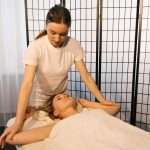

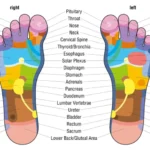
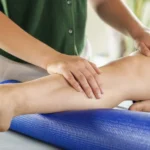

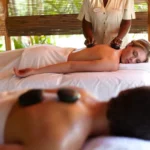

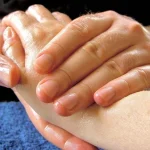

Your writing is a breath of fresh air It’s clear that you put a lot of thought and effort into each and every post